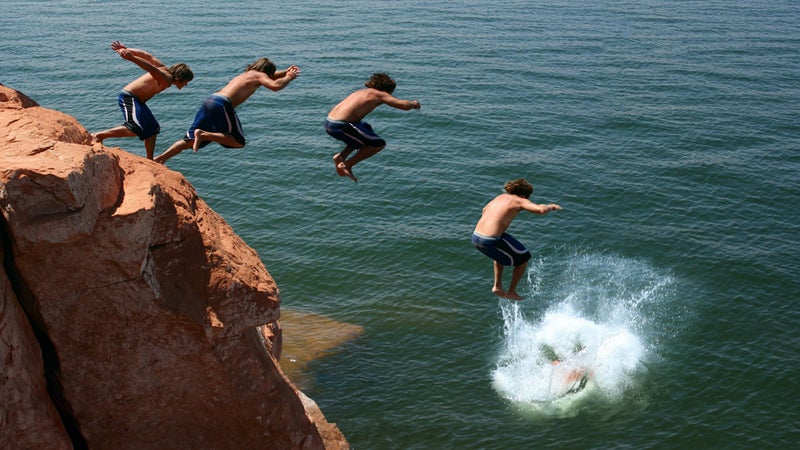Cliff diving traces its roots to Hawaii, where, in the 1760s, King Kahekili initiated his warriors with the tactic, thus proving their loyalty and bravery. Cliff diving is now a sanctioned sport under the World High Diving Federation (WHDF), but no measure of officiousness can take away its homespun daredevil quality.
Here are a few places to dive:
Kahekili’s Leap—Kaunolu, Lanai, Hawaii
These cliffs are popularly known as the birthplace of lele kawa(leaping feet first from a cliff into water without splashing). This place isn’t just legendary for its past, however. It remains one of the most challenging places to dive in the U.S. Divers here plummet from an 80-foot-high cliff into a relatively shallow, 12–18-foot deep, pool below. A similarly famous spot is Puu Kekaa (Black Rock) on Kaanapali Beach on Maui, home to a daily ceremony that reenacts King Kahekili’s feat. Each evening, the primal echo of a conch shell announces a cliff diver’s arrival; he summits the rock, casts a lei into the ocean below, and plunges into the surf.
—Fort Worth, Texas
This 17,000-acre lake along the Brazos River is known for its clear waters, and the best party cove in Texas at the Hell’s Gate/Devils’ Island area. In which case, the lake’s connection to cliff diving may have originated with a dare. The lake will be the only U.S. on the 2014 Red Bull Cliff Diving World Series, where competitors such as American Davis Colturi will take on the lake’s 88-foot cliffs. Most divers are well advised to aim for jumps from 20 feet instead.
Red Rocks Park—South Burlington, Vermont
This 100-acre park features drops into the placid, though freezing, waters of Lake Champlain. Nicknamed “The Seventy,” the cliffs here measure 76 feet. (Those slightly less daring should scramble to the 40-foot ledge instead.) The challenge here is heightened by nearby rock faces that leave divers a narrow splash zone.


